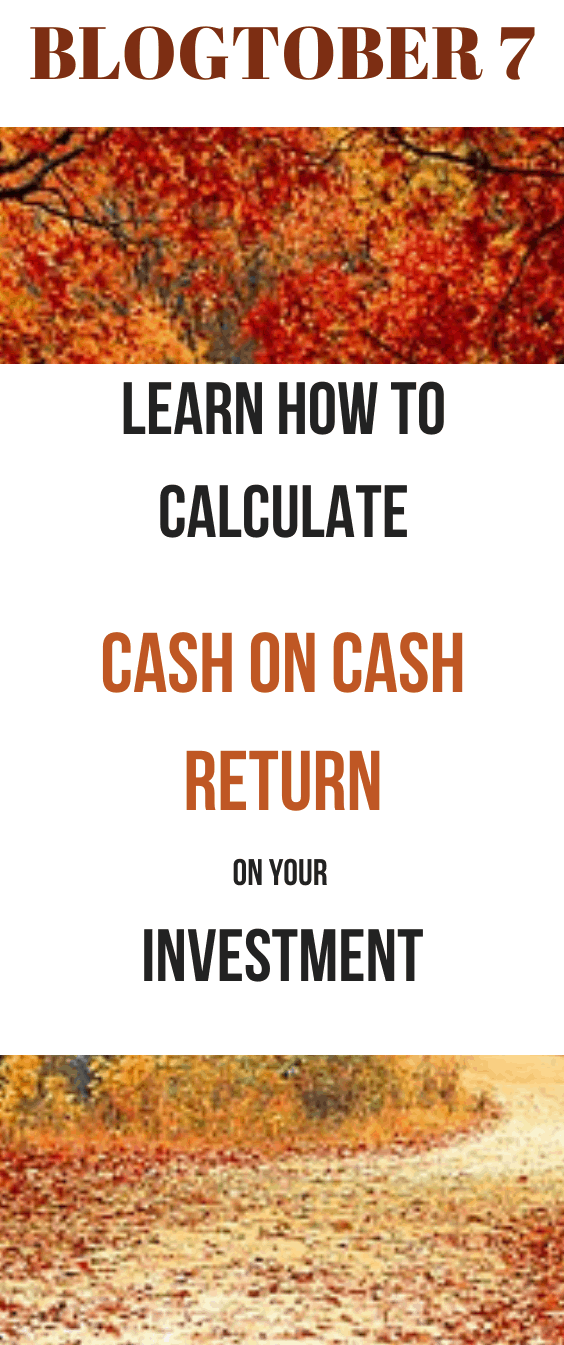Table of Contents
CASH ON CASH RETURN
Cash on cash return is a rate of return used in real estate transactions that calculates the cash earned on the cash invested in a property. It is one of the most important real estate ROI calculations.
How to calculate cash on cash return
Cash on cash return is relatively easy to calculate.
It is calculated by dividing the net operating income (cash flow) by the amount of cash initially invested. Hence the Cash on Cash return.
COCR = Cash flow / Cash invested
Scenarios work best in this type of situation. We will demonstrate buying an investment property cash down, versus using leverage.
Example
Let’s say we want to buy a 12 unit apartment complex, for 1 million dollars somewhere in Arkansas. Well, we won’t get the same awesome deal in New Jersey. Rent is 700 dollars per unit per month.
Scenario 1 : No loan
Let’s say you have tons of money under your mattress and buy the investment property cash down. Why? because, you are a baller. Let’s add an estimate of 5% in closing costs and rehab costs.
Total cash investment = $1,000,000 + $50,000 = $1,050,000.
Rent income for the year is $700 x 12 units x 12 months = $100,800
A good estimate for operating expenses is about a third of the rental income, so
Operating expenses is 1/3 x annual rental income = $100,800 / 3 = $33,600
NOI = Rent – expenses = $100,800 – $33,600 = $67,200
Cash on cash return = NOI/total cash investment = $67,200/$1,050,000= 6.4%

Pin me Pin me Pin me now
Scenario 2 – Using leverage with a loan
Most of us mortals will have to borrow money from the bank to finance the property. Ok! It might not be from the bank but the money to finance the property comes from someone else.
We are going to use the example of the same property as above to be able to compare mangoes with mangoes. Why use apples? Anyway
One thing to know is that the down payment for commercial real estate is usually higher than 20%.
So, lets assume you use the art of the deal and you are able to negotiate your way into 25% down payment. We also assume an 8% interest loan. Lots of assumptions here wow!
Down payment = 25% x $1,000,000 = $250,000
Now let us include the same closing and rehab costs of 5% of the total value, adding up to $50,000.
Total cash investment = $250,000 + $50,000 = $300,000
Now we need to calculate the NOI. In addition to the rental income and the operating expenses, we have to add the debt service to the equation.
Debt service per year = 8% x $750,000 = $60,000
NOI = $67,200 – $60,000 = $7,200
To get the new cash on cash return. Bring out your calculator.
Cash on cash return = NOI/total cash investment = $7200/$300,000 = 2.4%
Thus, the cash on cash return which you will generate from this rental property if you take a bank loan for 75% of the price is 2.4%.
I am actually surprised by this calculation. I have always been pro leverage. Note however, that this will not always be the case.
Limitations of using cash on cash return
It depends on many factors including
- how much the rent is
- how high of interest the loan is.
Also
- The calculation does not take into account the appreciation and depreciation of the property
- This calculation does not take into account the effect of compound interest
- It does not take into account the tax situation of the investor. Everyone’s IRS issue is different.
What is a Good Cash on Cash Return?
A good cash on cash return is different for everyone. However, most people or the so-called “experts” agree that 10% should be the minimum. This way you will get your money back in 10 years.
Either way, my calculation above is not encouraging. I am not sure why I picked those numbers. If the cash on cash return is this low, I might start to reconsider my approach to this commercial real estate thing.
Some have advocated using the 1% rule as a quick and effective way to evaluate cash flow.
Here is a Youtube video for your viewing pleasure. This one is longer, about 23 minutes.
It is from biggerpockets, so it is worth the time investment.
What do you think? Did I mess up the calculation? Should I find another way to build wealth?
Comment and share to show your support.
Do you like the video inclusion?
I am a pulmonary and critical care doctor by day and personal finance blogger/debt slaying ninja by night.
After paying off close to $300,000 in student loan debt in less than 6 months into my real job, I started on a mission to help others achieve the same. There is no magic to this than to strap up and get it done. Some of the ways we achieved this include side hustle, budgeting, great negotiation skills, and geographical arbitrage.
When I was growing up, common knowledge in Nigeria is that there is one thing you cannot trust anyone else with, and you guessed it – your money.
Being frugal came easily to me based on my background. However, the concept of building wealth did not solidify in my mind until when I finished medical school. I wish I knew what I know now when I was 14. Still, I don’t know enough and I am constantly learning to improve my knowledge.
My goal is to reduce financial illiteracy among young professionals. I am catering to the beginners – babies and toddlers in financial literacy.








xrayvsn says
That result was counterintuitive to what I would have expected. But I think the reason is that you don’t take into account appreciation which in commercial real estate can be forced upwards by increasing NOI. The power of leverage will make its benefit based on this because the appreciation benefit is solely on the person who is taking the mortgage (the bank doesn’t receive any benefit).
Should do some examples where there is appreciation involved and the pendulum swings to the leveraged investor rather than all cash
admin says
Yup. I will update all of these in the future, I will add other scenarios. You just gave me a post idea ! The power of leverage. Thanks for commenting.
Lee Bowden says
I could probably learn a lot from this place you have created here!
admin says
Thanks for stopping by. Please come again.